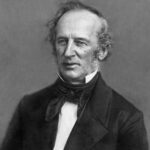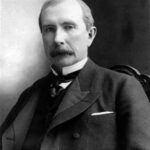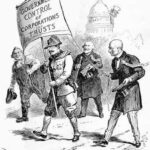This is part 2 in the series on Cornelius Vanderbilt. For the full text see Valuable Business Lessons From The Shipping Tycoon Cornelius Vanderbilt
With the emerging Industrial Revolution, Vanderbilt saw that the railroad business was the future and would soon replace much of the ferry business. He began a campaign to take over the Stonington Railroad, a most attractive asset. He started by buying up some of the smaller connecting railroad lines and cutting fares, a trick he learned from his steamboat enterprise.
When he owned the choke points, he blocked the Stonington Railroad from having access to New York City. Fearing bankruptcy, Stonington Railroad ‘s stockholders started to sell their stock. When the stock price hit rock bottom, Vanderbilt was able to buy their stock at an incredibly low price and take over. With control of the Stonington Railroad, Vanderbilt decided to sell all of his ships so he could concentrate on the railroad industry. He connected several of his railroads and built Grand Central Station in the heart of New York City.
After a dispute with the treasurer of the Erie Railroad, Vanderbilt plotted revenge and set his sights on connecting his railroads to Chicago by acquiring the Erie Railroad in a hostile takeover. However, Jay Gould and Jim Fisk, the financiers of the Erie Railroad, spotted Vanderbilt’s plot and began illegally printing new stock in order to dilute it.
Since state law restricted the number of shares a company could issue, Gould and Fisk bribed local legislators to legalize the new stock. Unaware he was being played, Vanderbilt continued to buy up stock and was milked out of 7 million dollars, the equivalent of over 1 billion dollars in today’s money. Gould and Fisk bragged about what they did and Vanderbilt threatened a lawsuit. The legislators and the illegal act of printing stock certificates were exposed, allowing Vanderbilt to recover most of his money.
Always looking for an edge, Vanderbilt saw that oil was discovered in Pennsylvania and Ohio. He realized that Kerosine, the oil used to light lamps, would soon change the world by turning night into day. Vanderbilt reached out to a small oil company run by a 27-year-old man named JD Rockefeller to make him a deal. Vanderbilt agreed to give Rockefeller a steep discount on his Kerosine shipping costs if Rockefeller shipped 60 train loads of Kerosine oil per day.
Rockefeller agreed to this deal even though his Kerosine production at the time was only about half of the contracted amount. Rockefeller agreed to Vanderbilt’s terms because transportation costs were a large part of the price of retail Kerosene and this deal allowed Rockefeller to make his Kerosine much cheaper to his consumers, thereby increasing his business. Cornelius Vanderbilt saw that the industry was changing from ferrying freight via water to moving freight via the railroad and was not afraid to change focus as the shipping industry evolved.
Moreover, Vanderbilt took the lessons he learned from the steamboat industry and applied them to his railroad industry. Vanderbilt also knew that pricing was the most powerful marketing tool a business owner could use to drive business.
What lessons from Cornelius Vanderbilt’s railroad empire can you apply to your business?












